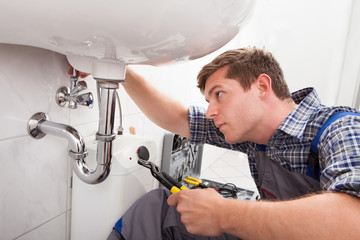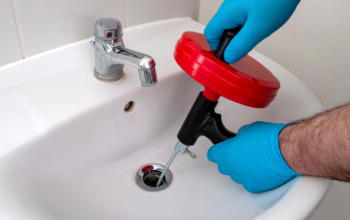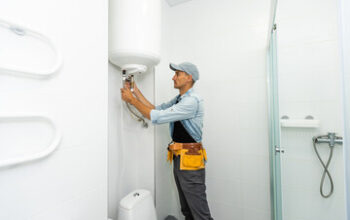Residential plumbing encompasses many services, from installing water heaters to fixing pesky drains. Residential plumbers often work with customers in their own homes, which requires high customer service and comfort working in someone else’s personal space.

There are different considerations when a plumber works on a multi-story apartment building or commercial space. These include greater usage, insurance coverage, and complex piping systems. Read on https://bryco-plumbing.com/ to learn more.
Many people don’t give much thought to the water supply lines running through their homes, but these pipes are essential for bringing clean drinking water and carrying wastewater away. Without these lines, your routine daily activities would grind to a halt. Understanding the basics of these important pipes will help you spot problems more quickly and respond to them competently when they occur.
Water supply lines run directly from the water main to your home, typically buried underground and made of copper, galvanized steel, or plastic. They connect the water meter at your curb to a tap on your property, then branch out to faucets and other appliances like washing machines, toilets, and showers.
A typical water service line is rigid copper, although flexible plastic piping like PEX is becoming increasingly popular. Both types of pipe are durable, can withstand significant amounts of pressure, and are easy to install in a home. Copper is more expensive than plastic, but it offers exceptional strength and handles heat exceptionally well.
Upon entering your home, the water supply lines divide into hot and cold lines, with each line directing water to different rooms in the house. In newer homes, you may find that your cold-water lines are installed in pairs so that one pipe’s use doesn’t affect the other.
These water lines are also responsible for distributing the amount of water flowing to each faucet. A water line of a particular size can only supply a certain quantity of water at a specific pressure and over a specific distance, called hydrostatic head. This is why it is important to choose the right water line for your needs.
Aside from water supply lines, there are other plumbing pipes in your home that aren’t as crucial to everyday functions but still need some attention from time to time. These include drain lines, vents, and other lines that carry waste and fluids out of your home. These are usually less durable than water supply lines, but they still have an important job to do. If you notice these pipes are leaking or showing signs of wear, contact Valley Plumbing for professional repairs.
A residential plumbing system requires a complex network of pipes to bring water in and drain it out. The first set of pipes are the supply lines that carry fresh drinking water in from the public main line. Then there are the distribution lines that connect faucets, toilets, showers and other appliances throughout your home.
The water supply lines are buried underground and made of copper, brass, galvanized iron or PVC. They are surrounded by pipe bedding that is designed to cushion the lines and prevent rock or hard soil from causing leaks. It is also important that the lines are properly sized to accommodate future expansion of the home.
For this reason, it is important for property and home owners to have basic knowledge about their water supply lines. This will allow them to detect any problems that may arise, and it will help them deal with emergency situations competently. In addition, a basic understanding of water supply lines can help them make informed decisions about which type of piping is best for their homes or commercial properties. In particular, they will be able to understand the benefits and limitations of PEX water supply plumbing systems. In fact, HUD studies have helped demonstrate the performance and value of PEX water supply lines.
Drain lines are ducts that transport waste to the central sewer disposal system. They are usually made of copper or plastics like polyvinyl chloride (PVC) and acrylonitrile butadiene styrene (ABS). A clogged drain line, however, is more than just an inconvenience – it’s also a health hazard. As bacteria and other toxins build up in the pipe, they can produce bad odors and cause severe health problems for those living in the home.
Most plumbing fixtures drain into a single main drain line, which is usually located under the lowest level of the home. This main line runs horizontally and with a slight downward slope out of the home toward a municipal sewer line or the septic tank on the property.
A home’s drain line network is also a venting system, ensuring that the plumbing system works properly and that air can escape from the pipes. This is important because without it, water pressure can drop and sewage gas will be released into the home, which can cause illness and even death in extreme cases.
There are a number of ways to vent plumbing pipes, including sanitary crosses, revent alternatives and loop vents. It’s important to check local code requirements and follow proper installation techniques to ensure that the venting system is working effectively.
While a good plumbing system can last a lifetime, it’s crucial to regularly schedule maintenance services to keep the pipes in their best condition. A key part of this is regular drain testing, which includes a video inspection to assess the integrity of the piping.
In addition to regular drain testing, it’s a good idea to call for professional drain cleaning when necessary. Whether it’s an inconvenient blockage or a more serious problem, professionals can quickly clear the clog and restore your drain lines to their normal functions. In many cases, this will include the use of high-pressure hydro jetting to safely and efficiently break up and flush out obstructions without causing damage to the pipe. This will prevent more costly repair and replacement needs down the road.
A residential home’s sewer line transports all of the waste and sewage from your house into the main city sewer line. When the line isn’t working properly, a huge number of issues can occur. Clogged and blocked lines allow toxic waste and sewage to build up, leading to unpleasant and dangerous conditions. A plumber who specializes in sewer services can help you repair or replace your sewer line with minimal disruption to your property.
A professional plumber can tell you whether the issue lies with your mainline or your drain line. A mainline can be fixed by a plumber who will only have to work inside your house the entire time while a drain line needs to be excavated, backfilled and re-laid. Getting the right technician to fix your problem can save you thousands of dollars and much less hassle.
Many homeowners are unaware of the difference between their home drain lines and their main sewer line, so they may confuse these two issues when calling for a plumbing service. It’s important to know this distinction because the fixes for each are different. The mainline is larger and heavier than a regular drain line, which means that it’s usually more expensive to fix. The mainline is also buried underground, which has traditionally meant that replacing the line would require digging up all or part of your yard.
While some plumbers will only work on a single type of pipe, other will work on both. Some will even have a specialist in septic systems, which are a unique kind of drain line that is sometimes installed on private properties in rural areas and some remote locations.
The majority of homes have been connected to a public sewer system, but there are still a large number of people who live on lots with septic systems. The most common home sewer drain line is a 4” pipe that runs from the interior of your house to the property line. In multi-family buildings and in some urban areas, the size of the line can increase to 6”.
The pipe material you choose for your new line is an important factor in determining its cost. The most common materials are PVC and acrylonitrile butadiene styrene (ABS), both of which can be molded to fit into existing piping. In areas where ground instability is a concern or extreme vibration is present, heavy-duty cast iron pipe can be used as well.



